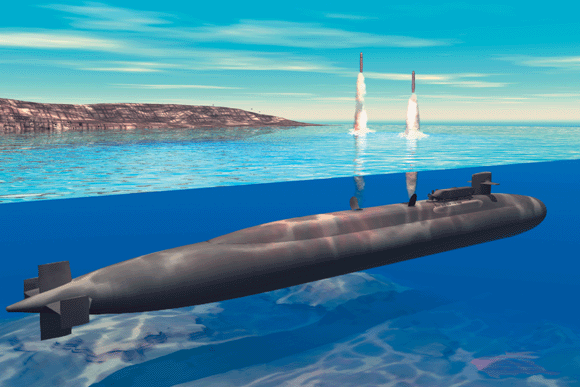
The Navy is investigating adding an anti-ship missile to its submarine force — bringing it inline with the majority of the world naval submarines, the director of Naval Reactors said on Wednesday.
In response to a question from the audience at the 2015 Naval Submarine League Symposium, Adm. Frank Caldwell said the Navy was exploring adding the capability to the fleet.
“For this audience, I’ll tell you we are considering that and we are taking some some steps to delivering that kind of capability to our submarine force and I can’t really say anymore than that,” he said.
The U.S. submarine fleet did use the UGM-84A Harpoon anti-ship missile but that Harpoon variant was retired in 1997. The current primary attack submarines is the anti-ship weapon is Mk 48 heavy torpedo and is limited in its range relative to anti-ship missiles developed and deployed with foreign navies.
In particular, Russian and Chinese submarines field a variety of anti-ship missiles with ranges that far exceed the Mk-48s.
For example, the emerging Chinese YJ-18 supersonic anti-ship cruise missile, capable of launching from a People Liberation Army Navy (PLAN) attack boat has an estimated range in excess of 300 miles. Likewise, Russia’s newer Oscar-class attack boats field the supersonic P-700 Granit — known by NATO as the SS-N-19 Shipwreck — with a more than 300-mile range.
For the U.S. submarine fleet it makes sense to return anti-ship missiles to boats to provide a greater standoff range for the force, Eric Wertheim — naval analyst and author of U.S. Naval Institute’s Combat Fleets of the World — told USNI News on Wednesday.
“When you look at potential combat operations and you can see how an anti-ship missile from a sub could prove useful,” Wertheim said.
“I do think it would add options to today’s submarine fleet to operate farther from high threat environments. Standoff capability adds a lot of options for military commanders.”
If the U.S. elects to include anti-ship missiles in its submarines there are several options to chose from beyond the legacy Harpoons.
The Norwegian company Kongsberg — that recently partnered with Raytheon — unveiled a subsurface launched version of its Naval Strike Missile in 2014. Lockheed Martin’s Long Range Anti-Ship Missile (LRASM) being developed for DARPA is currently air launched, but Lockheed has examined firing the missile from a surface ship and it could likely be adapted for submarine use.
Additionally, U.S. attack submarines all field Raytheon Tomahawk Land Attack Missiles (TLAM). Earlier this year, Naval Air Systems Command (NAVAIR) tested a Block IV TLAM as an anti-ship missile.
“If you have Tomahawks already onboard then it could be dual purpose [land attack or anti-ship],” Wertheim said.
Studying a sub-launched ASM conforms to an overall trend in the Navy in the last few years to empathize high-end warfare after years of supporting the low intensity conflicts in Iraq and Afghanistan.





